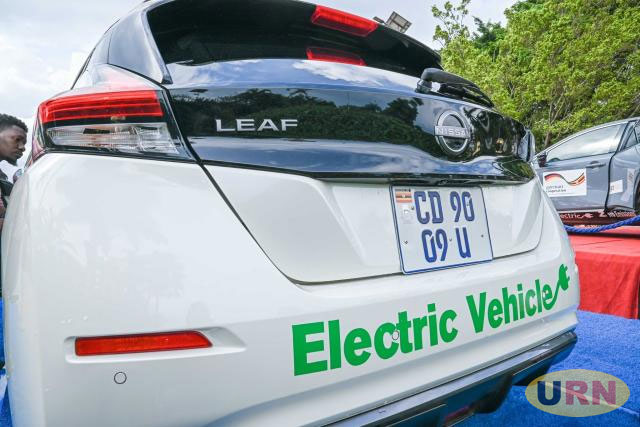Kampala, Uganda | THE INDEPENDENT | Uganda's E-Mobility sector has witnessed a remarkable investment exceeding $160 million across twelve companies from 2018 to 2024. This funding, aimed at enhancing research and development, manufacturing capabilities, and charging infrastructure, was detailed in the Uganda E-Mobility Outlook Report 2024.
According to the report, published by the Minister of Science, Technology, and Innovation, 70% of the investments originated from the Ugandan government. Minister Monica Musenero highlighted the government's strategic fiscal and non-fiscal initiatives, which have not only attracted this significant investment but also equipped the nation to produce up to 10,000 electric vehicles annually, with a local content share of up to 40%.
The report also notes a strong commitment from the private sector, which pledges an additional $800 million in investments over the next five years. This announcement comes just ahead of the National Science & Technology Week 2025, where advancements in science and technology are set to be showcased in Kololo, emphasizing the country’s progress towards a more innovative economy.
The annual Uganda E-Mobility Outlook Report tracks the developments within the nation's e-mobility landscape, supported by contributions from the Inter-Ministerial Technical Taskforce on E-Mobility. It reports a staggering increase in local electric motorcycle production, from just 13 units in 2019 to 2,795 in 2024, marking a growth of 139% between 2023 and 2024.
Since the initiation of production in 2019, Uganda has manufactured a total of 4,254 electric motorcycles, with contributions from major players like Gogo Electric, Zembo, Spiro, and Redvers. Additionally, the total number of electric and hybrid vehicles (excluding two- and three-wheelers) surged from 2 in 2019 to 1,127 units by 2024, with 88% of these registrations occurring in 2024.
The breakdown of the vehicle stock reveals that 8% were Fully Electric Vehicles (FEV), 2% were Plug-in Hybrid Electric Vehicles (PHEV), and 90% were Hybrid Electric Vehicles (HEV). Notably, SUVs and hatchbacks dominated the electric vehicle categories.
The E-Mobility Outlook Report serves as a benchmark for Uganda's progress in developing a competitive and sustainable e-mobility ecosystem, aligning with the priorities set forth in the National E-Mobility Strategy. This strategy, released on October 31, 2023, aims to position Uganda as a regional hub for e-mobility solutions, reducing reliance on imports and enhancing the quality of life for its citizens.
With aspirations to fully transition to e-mobility in public transport and motorcycles by 2030 and in passenger vehicle sales by 2040, the strategy also emphasizes the importance of local content. As of 2024, local content reached 21% for electric buses and up to 40% for electric motorcycles.
Uganda has developed its capacity to manufacture key components for electric vehicles, including Lithium-Ion Battery Packs, tires, and electronic systems, which mostly cater to the after-market. The strategy envisions a comprehensive domestic battery manufacturing and recycling ecosystem capable of producing over 1GWh of batteries annually by 2040.
In 2024, Uganda's cumulative production capacity for Lithium-Ion Battery Packs stood at 0.12GWh, with major players like Gogo Electric, Soleil Power, and Zembo contributing significantly to the electric motorcycle segment. The annual output of battery packs grew dramatically from 0.14MWh in 2019 to over 25.89MWh in 2024, reflecting a 167% increase from the previous year.
The launch of the E-Bus Xpress in November 2024 marked a significant step in public transportation, utilizing seven electric buses from Kiira Motors Corporation on routes around Jinja. Funded entirely by the Government of Uganda, there are plans to expand this service to additional cities, further underscoring the commitment to advancing e-mobility across the nation.








Comments (0)
Leave a Comment
Be the first to comment on this article!